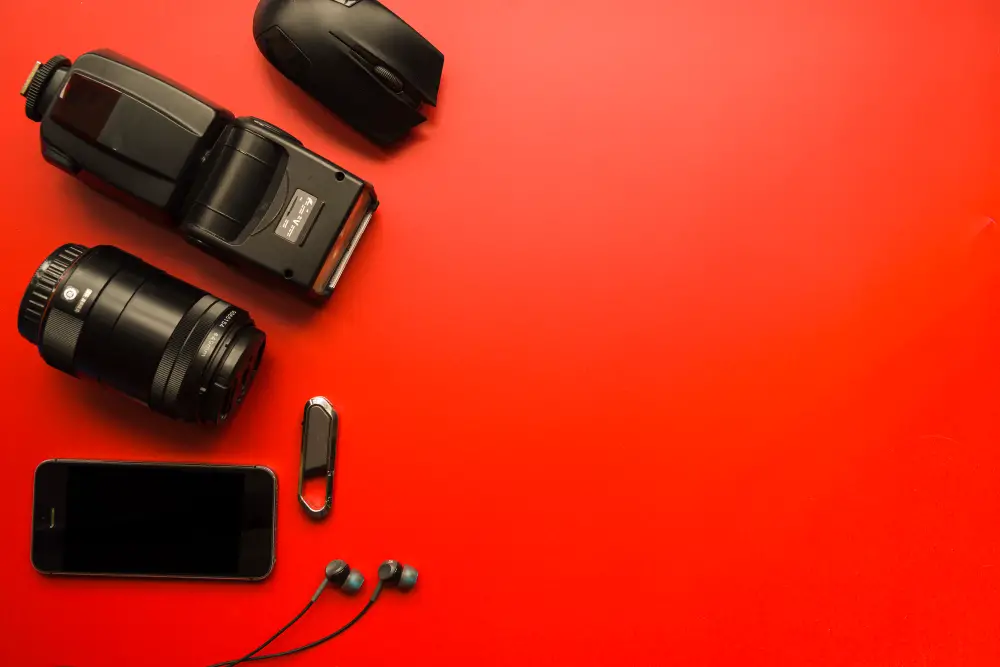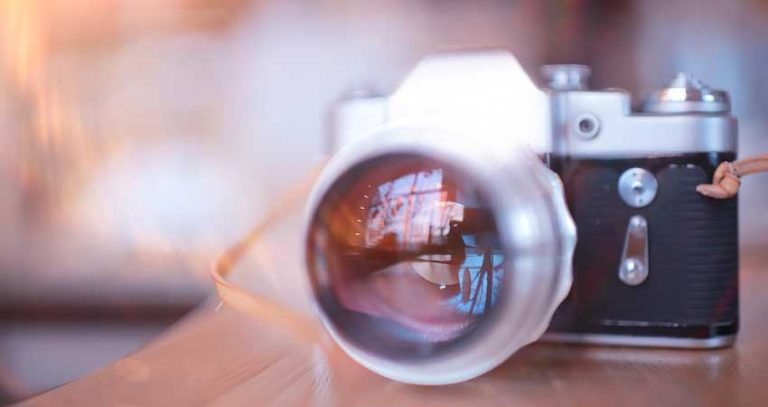How To Use External Flash On Canon Camera 10 Pro Tips
Are you worried about how to use external flash on Canon camera? There is no need to worry about it while I am here to advise you. An external flash can significantly increase your camera’s flexibility, ensuring that every photo you take has the best possible exposure. Here you will learn when to use your flash on Canon to make different types of images.
Adjust your flash to the lighting in your environment for the best photo. You can also rebound, mirror, and diffuse your flash to produce unique effects. Here are some steps you should take.
How To Use External Flash On Canon Camera (External Flash Basics)
A camera flash that is also external means it is not a part of the camera body. They can be remotely activated to fire away from the lens or hot-shooted onto a camera. Even though many cameras come with built-in flashes, an external flash offers more power and flexibility.
A flash that can be adjusted for direction and intensity is separate from the camera. Remember how we said to soften the flash’s light by using a diffuser? You can achieve the same effect by reflecting the flash off a wall or ceiling. We frequently point our external flash upward to illuminate a larger area rather than focusing on the subject directly in front of us.
Additionally, you can bounce and diffuse your flash using specific diffusers, giving you more control over the final result. Diffusers for the flash can be bought in plastic or fabric.
Part 1: Types of External Flashes
The most crucial aspect of photography is understanding lighting. Today, every DSLR and Quick & Shoot camera feature a built-in flash. Unfortunately, knowing that they are meant to be helpful, these built-in flash units may sometimes produce rather garish images.
Pop-up & Built-in Camera Flash
Integrated and Pop-Up Flashes are built-in flash units attached to the primary film camera. When you use those flash units, the light only fires in one direction—directly at your subject—because they are aligned with the lens. Due to the on-axis light’s high contrast, harsh shadows, and excessively dark background, this is typically a problem.
This problem has been captured in photos we’ve all seen, primarily those your friends took indoors at nightclubs and parties. You can avoid this unpleasant effect by coordinating the flash with the ambient light in the image.
Also Read: 6 Of The Best Flash For Canon 5D Mark iii
Particular camera flash
The dedicated flash is a fantastic piece of equipment that talks with the camera. The camera and flash collaborate to analyze data from the lens range, ISO sensitivity, f-stop, and shutter speed to choose the ideal flash output power. Red-eye can be avoided by tilting the flash and reflecting the light on your subject, which is one of the main benefits of using a dedicated flash rather than a built-in or pop-up flash.
Pre-flash flashes are frequently used to get your subject to constrict their pupils and avoid getting red eyes. Because of its adaptability, a separate flash is a considerably superior tool to the built-in flash.
Part 2: Canon Camera Models Compatible with External Flashes
Due to its perfect bounce angles, this Canon camera flash is among the best on the market. The strobe flashes twice quickly before the camera shutter clicks to illuminate your topic. You can bounce off a mirror or other surface with the Canon 430EX’s semi-automatic capability. But remember that it can only serve as an enslaved person, not your master’s flash.
Passionate photographs are produced by the Canon 600EX external flash, which is intended for professional use. We adore its 2.4GHz wireless trigger system and constant power design. It naturally functions with its TTL metered system and offers automatic exposure features because Canon manufactured it.
It’s critical to comprehend how external flashes work with the Canon digital camera lineup. To make use of an external flash, a suitable flash unit that attaches to the hotshoe is also required. Any of the most recent camera models from Canon will support the flash unit if it has the proper interface.
Without that interface, you cannot expect to put an external flash source on your camera. Outside Flashes External Flash System from Canon All of Canon’s most recent external flash units, such as the Reliabilities 430EX III-RT and Reliabilities 600EX-RT, are compatible with the EOS 7D Mark II.
Also Read: 7 Of The Best Flash For Canon R6
Part 3: Attaching an External Flash to a Canon Camera
It uses the hot foot on top of a film camera to attach the flash to a device. Slide the flash into the scorching shoe while ensuring it is not in lock mode. Never try to force it, or the contacts may be harmed. Ensure the flash’s compression force is set to release if it turns on slowly.
Ensure that the flash is turned entirely on and advanced as far as it will go. After that, lock it by turning the locking dial. Failing to do so can cause the flash to detach and become damaged.

Part 4: Configuring Settings to Use External Flash
Choose a flashing mode.
Either “manual” or “E-TTL” will allow you to adjust the settings manually. You should utilize the manual option to manipulate its flash to obtain the highest-quality images. The ISO, lens, and shutter speed must then be changed.
The flash power is set.
Depending on the surrounding lighting and the subject being photographed, adjust the flash’s power. Try reducing the wattage and taking another picture if the issue in your snapshot appears sharply lit.
To produce a brighter image, turn up the flash if your subject becomes too dark or in the shadows. A lower power setting can be used in locations with plenty of ambient natural or artificial light, while a higher power setting is appropriate for darker scenes.
Turn on night mode.
By switching to night mode, your camera will recognize that little natural light is present. The camera will then use the slow-sync flash. By doing this, the shutter speed will be slowed while the flash is still being used. With the flash still activated, you can use this setting to improve the natural lighting in your photo.
Part 5: Tips for Taking Photos with External Flash
If you are using an external flash to take photos in your home, you may notice that the flash produces harsh shadows. This can be easily avoided by using a flash diffuser. A flash diffuser is a cover that fits over the flash on your camera.
They are typically made of translucent plastic and will soften the light from your flash, making it easier to take photos in a variety of lighting situations. You can easily purchase a flash diffuser at any photography store or online.
On the other hand, if you are using an external flash to take photos outside of the home then you should buy a small softbox to cover your flash. You can also make one yourself by simply sewing together two pieces of fabric and placing it over your flash. Add A Neutral Density Filter One way to soften the light in your photographs is to use a neutral density filter.
This filter is attached to your camera lens and can be used in a variety of lighting situations. You can find these filters at any camera store or online. The basic purpose of a neutral density filter is that it reduces the amount of light entering your camera.
Also Read: 6 Of The Best Godox Flash For Canon
FAQs
How do I shoot with an external flash?
Ans: You’ll need to utilize the flash if there isn’t much natural light where you are. Both inside and outside photography fall under this. Play it around your settings to prevent the flash from producing undesirable effects like red-eye or odd shadows.
How do I sync my Canon camera to an external flash?
Ans: Go to Flash control External flash func. setting][Shutter sync. And choose the icon next to the flash mode item to configure the shutter synchronized using the camera.
What setting should my external flash be on?
Ans: For the best picture quality, use ISO 100. For a lot of depth of field, choose the f11 or f16 aperture. A 1/160s shutter speed is necessary to ensure that the camera curtain causes no shadowing. By altering the intensity of the after-flash, you can control the image’s brightness.
How do you use flash attachments on a Canon camera?
Ans: Use the hot foot on top of the primary camera to attach the light to the device. Slide the flash into the hot shoe while making sure this is not in lock mode.
Final Thought
How to use external flash on a Canon camera? With the numerous flash units presented, there are many possible ways to obtain more illumination. Understanding the limitations of the flash and the lighting dynamics of the environment you are in will help you use them successfully and without seeming like a novice.
Then, use your imagination! With practice, each specialty flash unit will significantly enhance your photos and function effectively for the purpose they were created. It is advised that you avoid using flash whenever possible because it can be dangerous when misused. It’s ideal to select a flash unit and accessories that will help you capture the image because you may frequently achieve an effective shot without a flash.

I am Terry E. Collin.
I have some top branded cameras, especially Canon R6, Canon EOS 60D and 70D, Nikon D700, Lumix G9, Lumix G85, and many more. I have been doing photography for 5 years with Top Brand cameras like Canon, Sony, Nikon, Panasonic, etc.
The purpose of creating this blog is to share my personal experience and expertise with most popular cameras.
Let’s share some of them one by one in this blog For FilmingLab Audience







